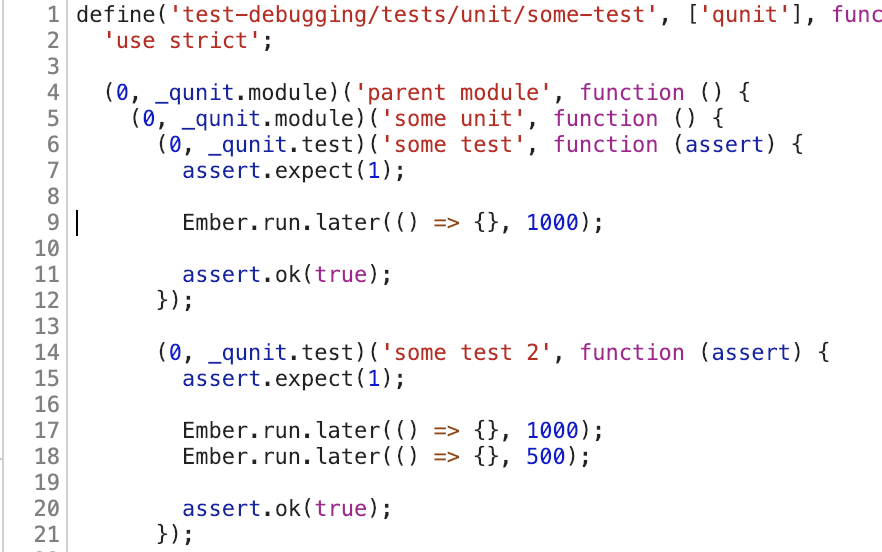| 1 | # Debugging Async Leakage Using Test Isolation Validation
|
| 2 |
|
| 3 | ## Overview
|
| 4 |
|
| 5 | The `ember-qunit` test isolation validation feature allows you to opt-in to enabling automatic detection of async execution that extends beyond when the test is considered complete. This can be a particularly difficult problem to detect in your tests, and can contribute to non-deterministic test execution.
|
| 6 |
|
| 7 | ## Installation
|
| 8 |
|
| 9 | The test isolation validation functionality is available on `ember-qunit` version `4.2.0` or higher.
|
| 10 |
|
| 11 | ```bash
|
| 12 | ember install ember-qunit
|
| 13 | ```
|
| 14 |
|
| 15 | ## How to use
|
| 16 |
|
| 17 | In order to enable test isolation validation, you'll need to configure the option, `setupTestIsolationValidation: true` in `ember-qunit`'s `start` function, which starts your application or addon's test run.
|
| 18 |
|
| 19 | ```js
|
| 20 | // tests/test-helper.js
|
| 21 |
|
| 22 | import Application from '../app';
|
| 23 | import config from '../config/environment';
|
| 24 | import { setApplication } from '@ember/test-helpers';
|
| 25 | import { start } from 'ember-qunit';
|
| 26 |
|
| 27 | setApplication(Application.create(config.APP));
|
| 28 |
|
| 29 | start({
|
| 30 | setupTestIsolationValidation: true
|
| 31 | });
|
| 32 | ```
|
| 33 |
|
| 34 | ## Finding non-isolated tests
|
| 35 |
|
| 36 | Once a test run is started with test isolation validation turned on, analysis will occur on a test-by-test basis. Once a failure is detected, a new assertion will be added that will fail the test, indicating that the test is not isolated.
|
| 37 |
|
| 38 | 
|
| 39 |
|
| 40 | As indicated by the assertion message, important (and more useful) information is printed to the console.
|
| 41 |
|
| 42 | 
|
| 43 |
|
| 44 | As you can see, the following information is provided for each test that fails isolation validation:
|
| 45 | - The test module and test name
|
| 46 | - The category of failure, one of
|
| 47 | - Pending AJAX requests
|
| 48 | - Pending test waiters
|
| 49 | - Scheduled async
|
| 50 | - Scheduled autorun
|
| 51 | - The stack trace of the code that caused the isolation failure (Scheduled async or Scheduled autoruns only)
|
| 52 |
|
| 53 | In the case of pending **AJAX requests** and **test waiters**, we see those categorizations of the failures. In the case of **scheduled async** or **scheduled autoruns**, we get a bit more information - stack traces that point to the code that scheduled the async call.
|
| 54 |
|
| 55 | By viewing this information output to the console, we can traverse the stack from top to bottom, clicking the associated file/line number to get a more detailed view of the callee.
|
| 56 |
|
| 57 | In line 9 below, we can see that an async call was scheduled via `Ember.run.later`:
|
| 58 |
|
| 59 | 
|
| 60 |
|
| 61 | Having this information will enable you to evaluate the best way to address the particular case of async leakage detected.
|